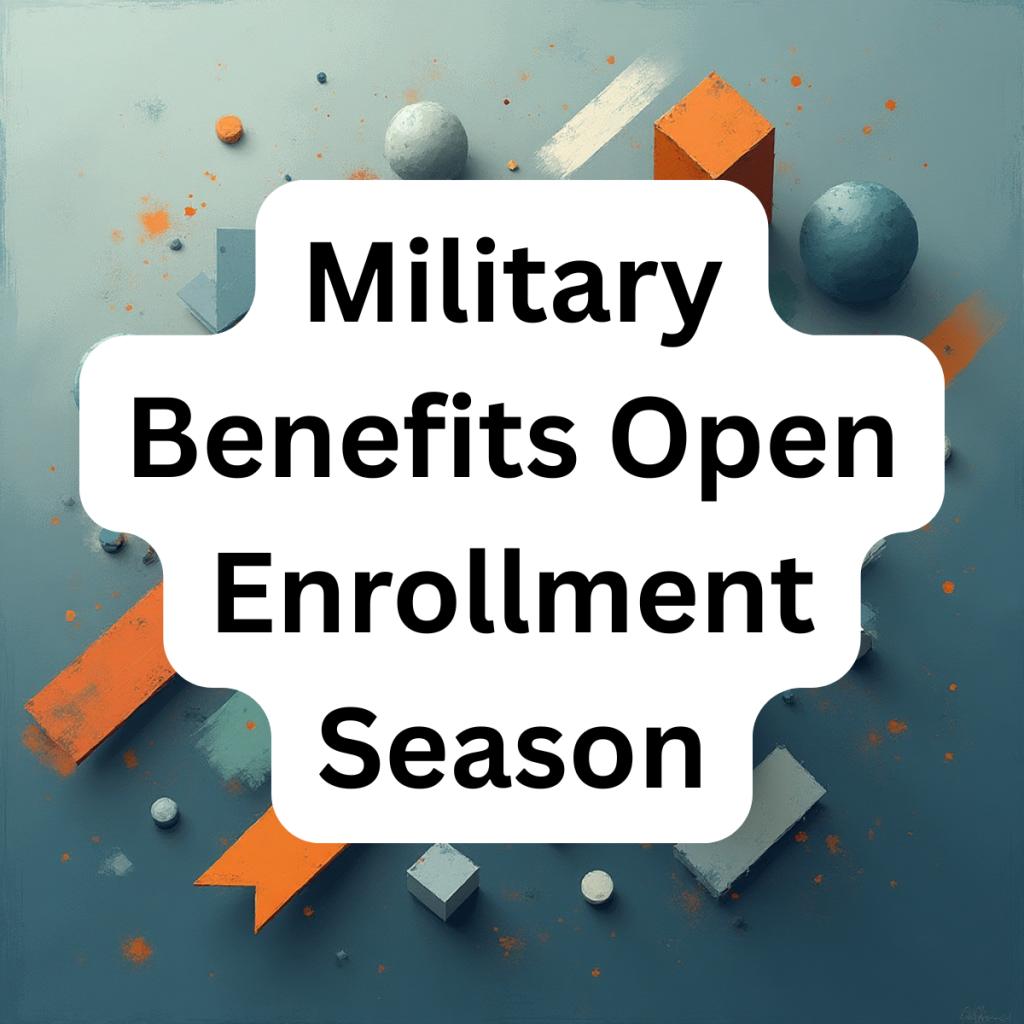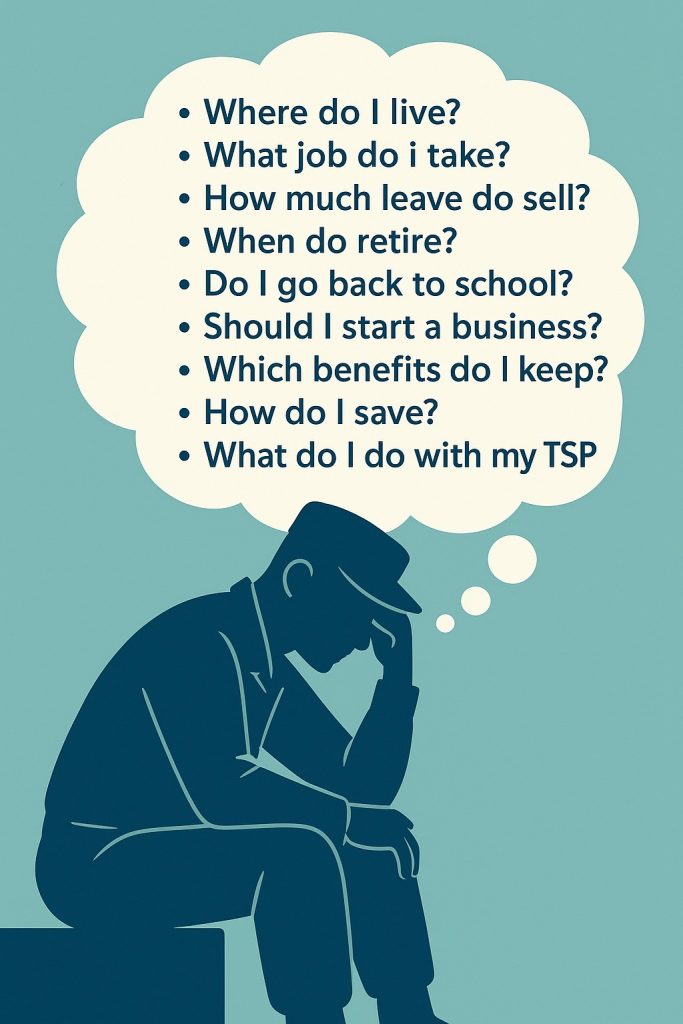Know These 5 Military Benefits Before Open Enrollment Season
Federal benefits open season is a great time to learn about your, well, benefits. Many of these benefits only became available to military members in the last couple of years, so it’s worth checking for updates. Some of these programs still aren’t widely known or understood yet.
Regardless, don’t let long acronyms like DCFSA, HCFSA, and FEDVIPS scare you. All of these programs have resources to help you choose what’s best for your family. Let’s get into it.
What is the Federal Benefits Open Enrollment Season?
In short, the federal benefits open enrollment season is when you can add, change, or disenroll from certain federal benefits or insurance coverage. It’s always the second week of November to the second week of December. For 2025, the open enrollment season is from November 10th through December 8th.
Why Do We Have Open Enrollment?
Another reasonable question is why we have open enrollment for federal benefits in the first place. In short, just like anything, there’s money involved, which screws everything up. For programs to understand operating costs and budgets, they need to know how many people will use each benefit.
The other reason is to keep people from enrolling in an insurance program, making a claim, then stopping coverage. If this were allowed, then insurance programs wouldn’t work. The whole idea of insurance is to spread costs among many people, most of whom won’t need much, if any, coverage most of the time. However, we pay premiums so that when we do need to cover a large, often unexpected expense, we can rely on insurance to cover the costs agreed to by the insurance company.
Benefits Subject to Open Enrollment
This is not an exhaustive list of all federal benefits, so some may not be listed. The main ones we’ll talk about are the different types of insurance eligible for open enrollment, as well as the flexible spending account (FSA) options available to military members and their families.
Federal Employees Dental and Vision Insurance Program (FEDVIP)
Although you might have some coverage for vision and dental through TRICARE or the VA, you could be eligible for the Federal Employees Dental and Vision Insurance Program (FEDVIP). You’ll need to go to the BENEFEDS website to check your eligibility, compare plans, and enroll.
Even if you’re retired, you can get coverage. You’ll need to make sure you’re eligible and check out what plans exist in your area. There are other situations in which you can enroll outside open enrollment season, but it’s still a good idea to check first.
One other note, many of the plans offer the option to pay bi-weekly or monthly. At first glance, the bi-weekly option might seem a tad cheaper. However, once you calculate the total annual amount, the costs are nearly identical. This is really just a preference.
Flexible Spending Accounts
Military members now have access to two different flexible spending account (FSA) options: the Dependent Care FSA (DCFSA) and the Healthcare FSA (HCFSA). These can be a tad confusing, but they’re just a way to save on taxes.
The basic premise of an FSA is to exclude wages from your gross income, which is used for eligible expenses. This could significantly reduce your tax bill for the year. It’s kind of like getting paid “under the table” for the amount you set aside from your check and use for qualifying expenses. If you use these with other benefits you have, you can save several hundred dollars or more, depending on how many expenses you have for the year.
Risks of Using an FSA
The biggest risk of using an FSA is that it’s a use-or-lose program. In general, you need to use all the money you place into your FSA. If you exceed the carryover amount or don’t submit for reimbursement by the deadline, you’ll forfeit any remaining funds.
Both the DCFSA and HCFSA are managed through the BENEFEDS website. It’s important to remember that these are two separate accounts for two different purposes. You can sign up for both at the same time if you meet the eligibility requirements for both accounts and have upcoming qualifying expenses.
Minimum Amounts
For both accounts, the minimum annual contribution is $100. This is where the similarities end. If you want to watch a video about the enrollment process, check this one out.
Dependent Care Flexible Spending Account
The dependent care flexible spending account (DCFSA) is used for eligible dependent care expenses such as daycare. If you have eligible expenses for siblings or parents, make sure they qualify as dependents. The FSAFEDS website is the best starting point to learn more about the DCFSA, enrollment options, and to submit claims.
You also need to make sure you’re using the DCFSA in concert with other dependent care subsidies and programs. You can’t double- or triple-dip on covered dependent care expenses. In other words, if you had minimal out-of-pocket expenses for the year, you might want to skip the DCFSA and take the Child and Dependent Care Credit instead.
For a visual representation and more in-depth breakdown, check out this article on Enlisted Money.
National Guard and Reservists
Unfortunately, our reserve component brothers and sisters aren’t eligible for the DCFSA unless they’re on Title 10 orders. It’s uncertain whether this will change in the future, but for now, eligibility is limited or nonexistent.
Eligible Expenses and Limits
Starting in 2026, the DCFSA limit has increased to $7,500 (couple) or $3,750 (single). In general, it’s better to optimize for the Dependent Care Credit for most military families. However, for many military families, especially dual-military couples with several children, $7,500 doesn’t go very far. You might be able to max out both the DCFSA and the dependent care credit.
For the complete list of eligible expenses, check the FSAFEDS website. Many care options are covered, including adult day care, after-school programs, and some qualifying summer camps.
Spouse Employment or Education Requirements
Your spouse (if you’re married) must be working, attending school, or actively seeking work. Be sure to check the details of your spouse’s employment status, income, or academic standing to make sure you’re eligible. You can search the FSAFEDS frequently asked questions page for more information.
Carryover and Use Limits
One last note on the DCFSA, you must incur eligible expenses no later than March 15th of the following year. So, you don’t want to contribute too much. Keep in mind, if your expenses change later in the year, you can adjust the amount you’re contributing. If you have a change in status or dependent care costs, make sure to update your account right away.
Healthcare Flexible Spending Account (DCFSA)
The healthcare flexible spending account (HCFSA) is an entirely separate account for qualifying out-of-pocket medical expenses. There are a lot more qualifying expenses than you might realize. Even things like sunscreen, contacts, and feminine hygiene products are eligible.
Starting in 2026, you can set aside up to $3,400 in the HCFSA. You can also roll over up to $680 ($660 for 2025) to the following year. However, you must re-enroll for the following year to roll over funds.
Regardless, the HCFSA is a no-brainer for most families. If nothing else, at least putting in $100 to test it out is a good idea. You can safely set aside up to the carryover amount as long as you’ll eventually have enough expenses.
Use Your Free Resources First
It’s still recommended to use free resources for healthcare expenses first. It’s still cheaper to get medications for free from the pharmacy or self-help over-the-counter medications at the clinic.
TRICARE Enrollment
For many families on active duty, TRICARE is the main option. However, you might want something different depending on coverage in your area. This might be a bit more common for reserve component service members.
During open enrollment, you can change between TRICARE Prime and TRICARE Select. One note: the US Family Health Plan (USFHP) is still considered a form of TRICARE Prime, so you don’t have to wait until open enrollment season to switch between USFHP options and “regular” TRICARE Prime.
However, if you’re switching between other TRICARE plans or switching between an employer plan (without a qualifying event), then you’ll need to do so during open enrollment. If you’re unsure, it’s always best to check.
Qualifying Life Events
For all these programs, there are other qualifying life events (QLE) or special enrollment periods that may apply. Don’t assume you meet the criteria. Always call to double-check. Even though government-run call centers can trigger migraines and ulcers, it’s still best to make sure you’re covered.
Reach Out for Expert Assistance as Needed
If all this sounds confusing, utilize the free resources you have to decide what’s best for you and your family. This is critical for programs like the DCFSA. You can go to Military OneSource to find the nearest personal financial counselor or contact a MilTax advisor.
If you have a more complicated tax situation, it might be best to consult a professional who’s well-versed in military pay and benefits. The Military Tax Experts Alliance is a great place to find one.
Regardless, don’t file these benefits in the “too complicated, deal with later” pile. That corner of your brain is already full enough. Open enrollment season will come and go before you know it. Please don’t wait, take advantage of your benefits: you earned them!
Visit Brandon Lovingier, ChFC®, AFC®, MQFP®, Founder of Enlisted Money at the Enlisted Money website. If you need help with your Open Season decisions, the MQFPs listed here can help you with that.


